Informations General > Tips and Guides > Tutorials > Bikes
> Transmission >Replacing the rear derailleur cable
 TUTORIAL REPLACING THE REAR DERAILLEUR CABLE
TUTORIAL REPLACING THE REAR DERAILLEUR CABLE
Ce tutorial aims to help you replace the rear derailleur cable on your bike.
Difficulty :

Temps necessary:
10 minutes
Necessary material :
HOW TO REPLACE THE REAR DERAILLEUR CABLE?
Fairly easy operation to carry out.
The cables of a bicycle should be replaced regularly (about once par year). Indeed, they are exposed to bad weather and subject to strong mechanical constraints.
To ensure the good condition of your cable, check if the cable is not frayed at the fixing nut on the derailleur or at the gear lever .
Several signs should alert you and lead you to replace the cables and speed sheaths.
Un derailleur cable may rust when made of non-stainless steel. It can also fray or partially break, mainly in three places:
At the cable end, often when it has disappeared: in this case, you can cut the cable again and crimp a new end if there is sufficient length remaining and still intact afterward the tightening screw. Otherwise it will have to be replaced.
At the level of the cable clamp screw: this quickly leads to operating problems of the derailleur then a complete breakage of the cable, which must therefore be replaced as quickly as possible.
At the cable head: this is hidden in the derailleur control mechanism. It is therefore a bad gear shift which can alert you, especially if it appears suddenly. A visual check requires releasing the cable to remove it from the lever. It is better to act before the cable breaks at this location, itar it is sometimes difficult to remove the cable head and the filaments stuck in the lever!
Unlike brake cables, there is only one type of derailleur cable, the differences mainly concern the conduit passages at the level of the horizontal tube for mountain bikes and at the level of the diagonal tube for road bikes.
On the other hand, there are different sheath ends. The metal ends do not fit at the rear derailleur. The Shimano 2-groove bits have standard, non-sealed tips, the 4-groove ones are sealed.
The cable ferrules are clamped at the end of the cables, once installation is complete, to prevent fraying of the cable.
A drop of oil or a little grease at each end of the sheath can help the cable slide better. Be careful, however, not to overuse it! Lubricant tends to build up in the sheath and clog it over time.

1) Before proceeding with disassembly, shift to the smallest sprocket in order to relax the derailleur.
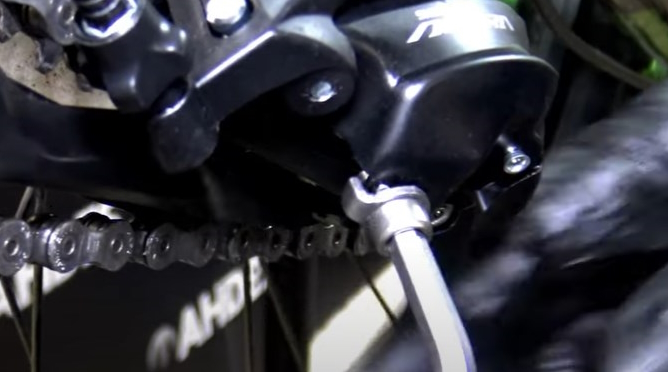
2) Using the BTR wrench, loosen the rear derailleur cable retaining screw.
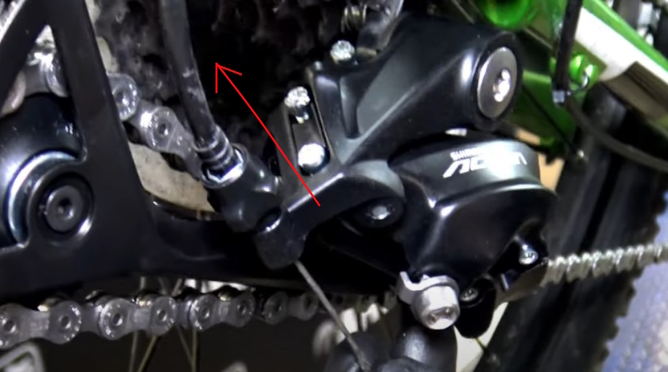
3) Remove the derailleur cable sheath
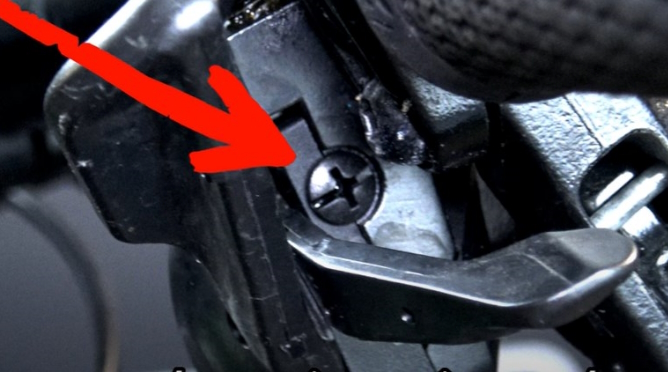
4) On the example bike, the head of the derailleur cable is placed behind the screw in the gear selector
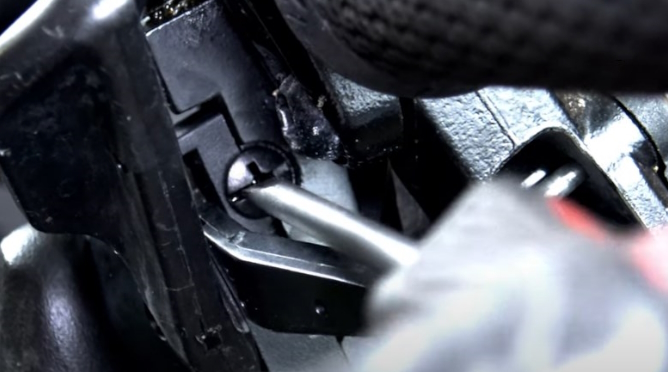
5) Using the screwdriver, unscrew and remove the screw
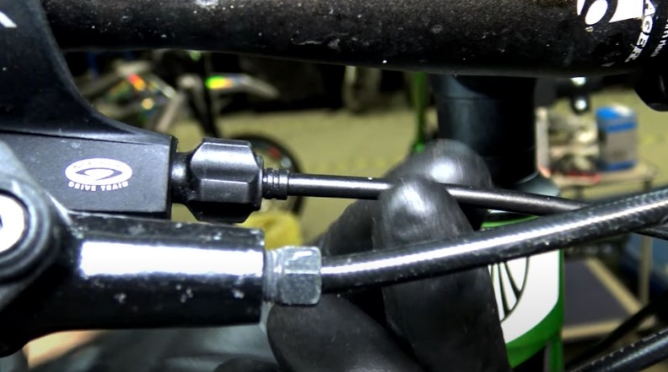
6) Remove the derailleur cable housing at the lever
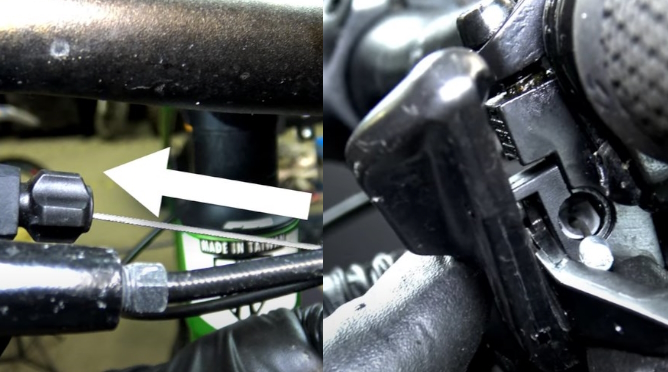
7) Push on the cable to release the cable head.
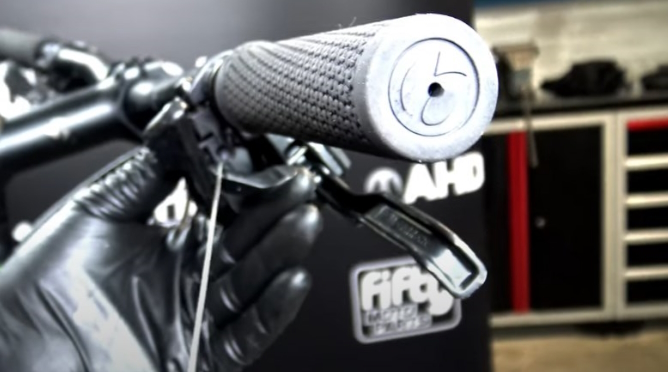
8) Pull on the cable to release it completely.
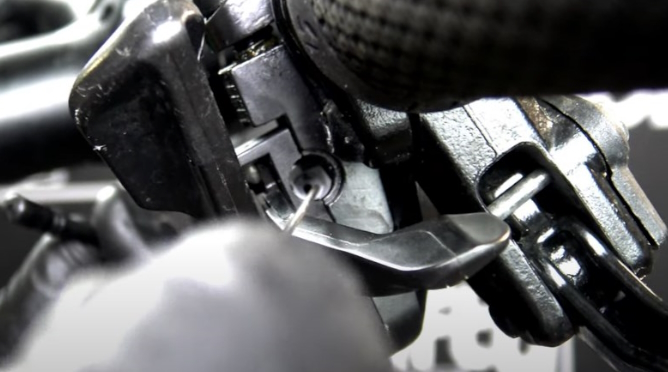
9) Pass the cable through the gear lever
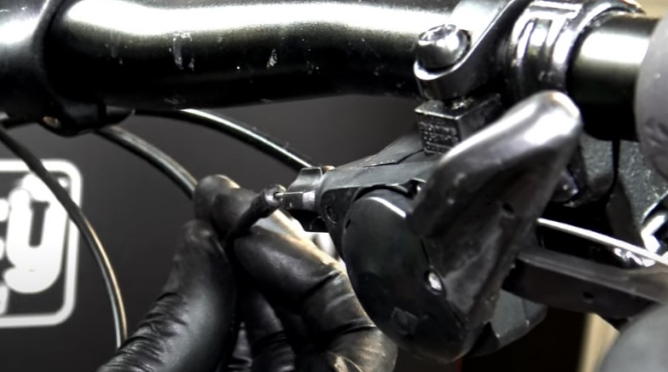
11) Thread the cable completely into the sheath.
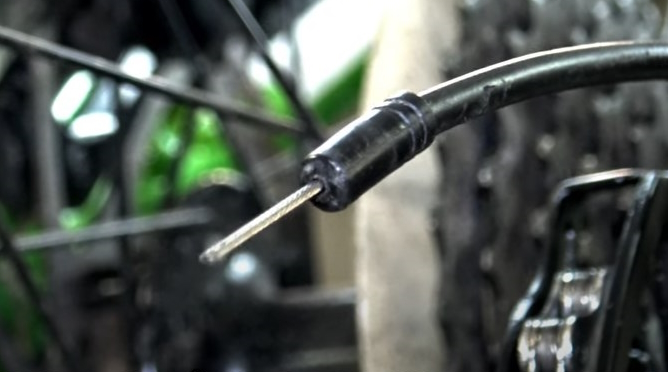
11) Push the cable so that it enters completely into the conduit and comes out the other end of the conduit.
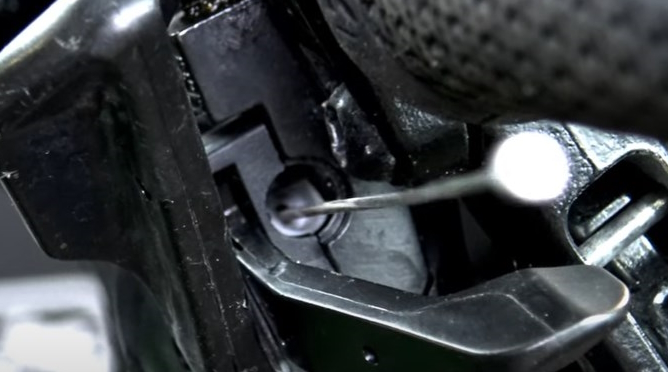
11) Pull on the cable until the tip fits into place.
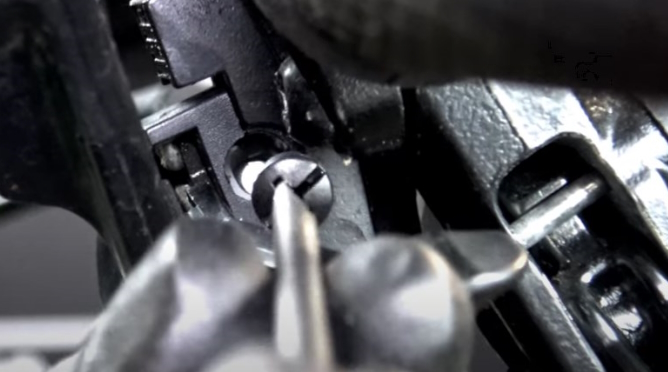
11) Replace the lever retaining screw

11) Place the sheath at the rear derailleur.
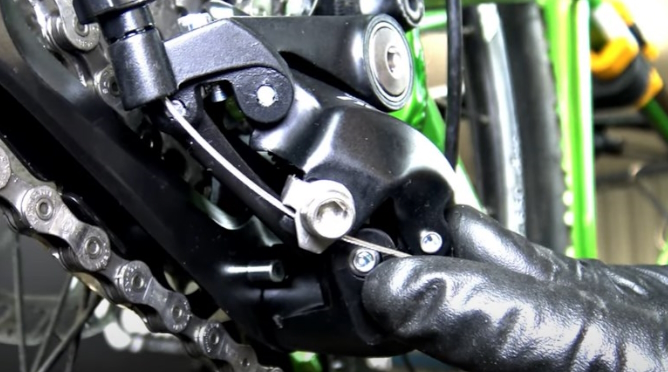
11) Pass the cable through the derailleur retaining screw. Depending on the model, there is a notch under the hexagonal screw in which the cable must fit.
11) Tighten the derailleur cable retaining screw

11) Remember to keep around 3 centimeters of cable to prevent future interventions.

11) Cut off the excess cable.
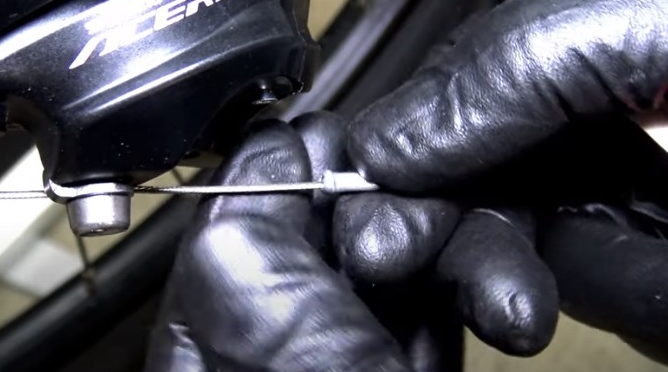
11) Place the tip at the end of the cable
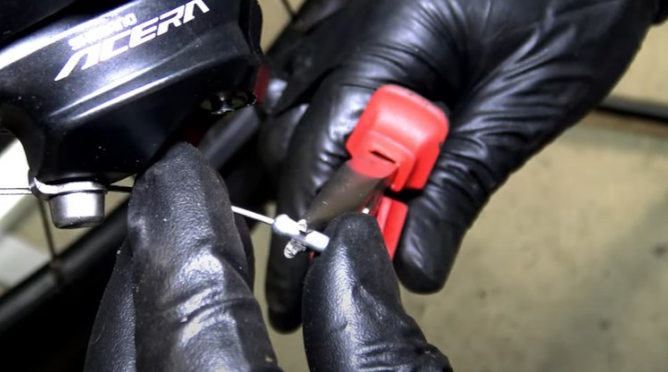
11) After applying a little grease to the tip, using pliers, close the tip.
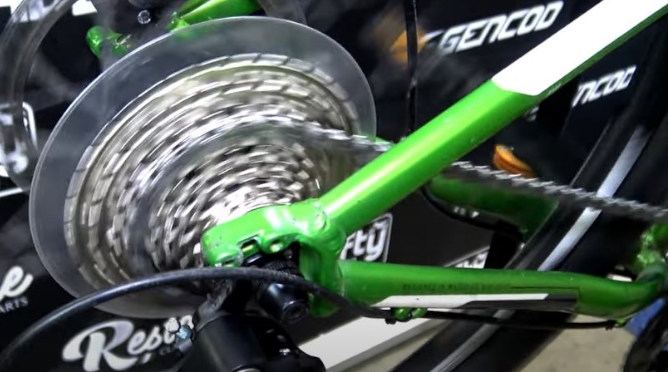
11) Remember to adjust the derailleur and check that the gears shift correctly.






